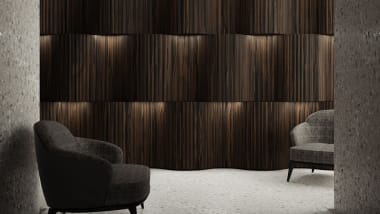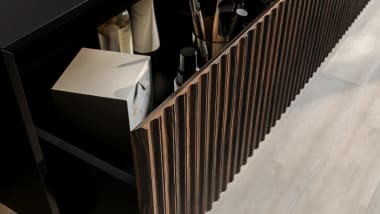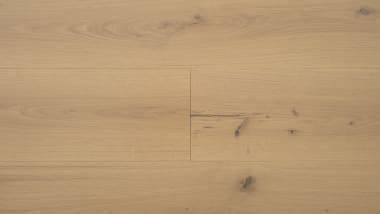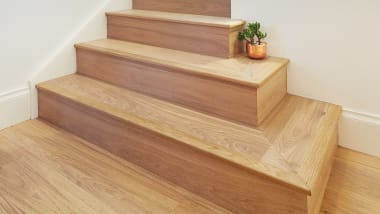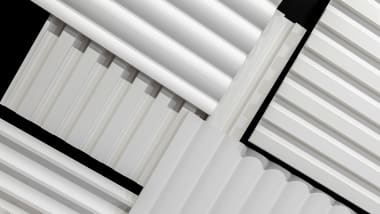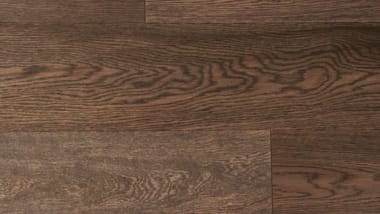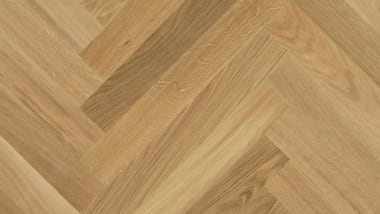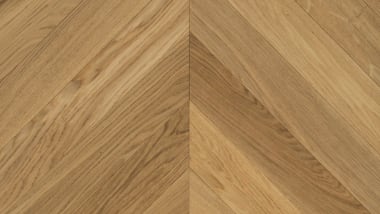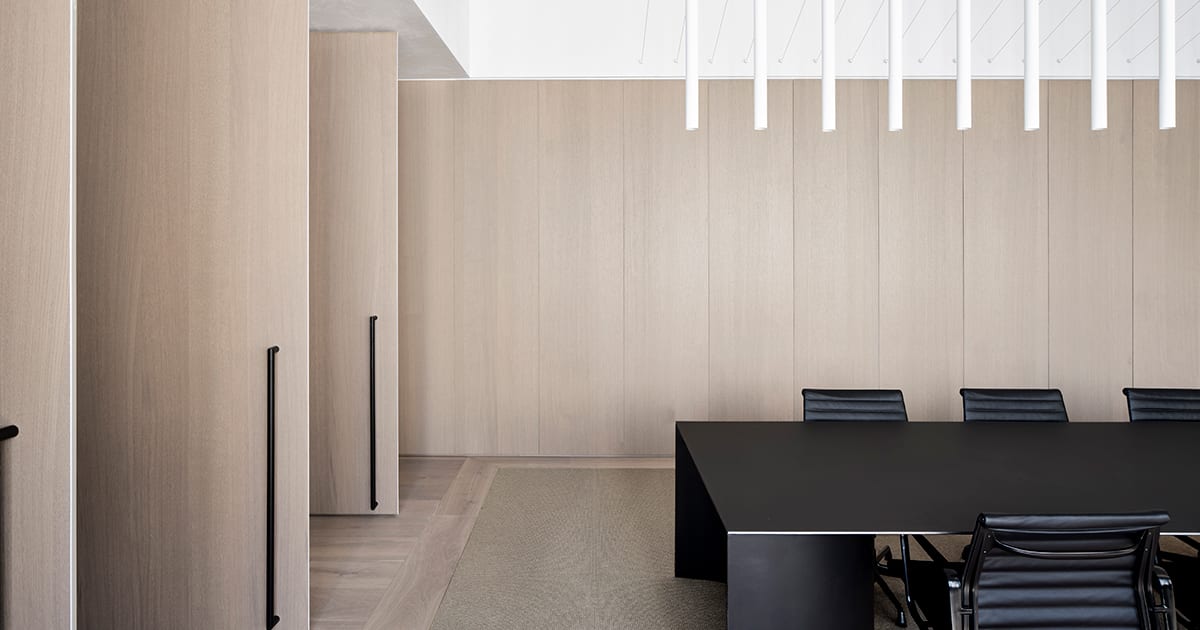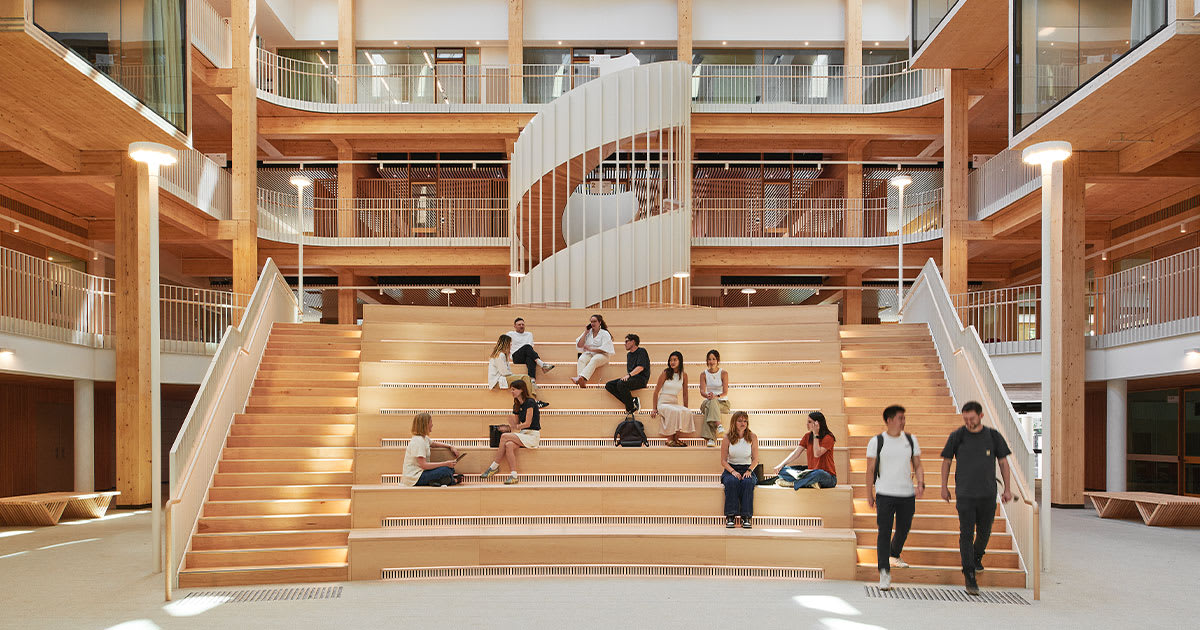Healthy Buildings: How Wood Enhances Sustainability and Well-being in Commercial Office & Workspaces
22 Apr 2025
Timber is more than just a design choice, it plays a crucial role in creating healthy, sustainable workplaces. Discover how wood enhances indoor air quality, boosts well-being, and aligns with Australia’s green building standards. Learn why architects and designers are embracing timber for healthier, more productive workspaces.
What exactly is a healthy building?
In simple terms, it’s a space designed to prioritise the health and well-being of the people who use it. This isn’t just about having a stylish interior or cutting-edge layout, it’s about creating environments that actively support better health outcomes. Think improved air quality, an abundance of natural light, proper ventilation, and the use of materials free from harmful chemicals.
Healthy buildings contribute to environmental sustainability by reducing energy and water consumption and providing clean air and health-friendly public facilities. These features are all according to a paper published in the National Library of Medicine which not only talks about supporting occupant health but also aligns with corporate social responsibility goals and can enhance a company's public image.
Across Australia, there’s a growing shift towards these kinds of spaces, especially in commercial office and workspace projects. A study focusing on Australian open-plan offices compared certified healthy workspaces to standard ones. The findings revealed that occupants in certified environments reported higher satisfaction levels, suggesting that well-designed workspaces contribute to improved employee experiences and therefore improved productivity also.
Why Healthy Buildings Matter in Australian Workspaces
Healthy buildings are particularly significant in Australia’s offices and workplaces, where we spend a large portion of our day. Poorly designed spaces can result in lower productivity, higher stress, and decreased employee satisfaction. On the other hand, thoughtfully designed, health-focused work environments can improve morale, concentration, and even reduce sick days. For businesses, investing in healthier spaces is more than just a trend, it’s a strategic move that benefits their people and company’s bottom line.
Organisations and companies who value work-life balance and liveability, and create spaces that align with these values, are more important than ever. From Sydney’s bustling CBD to Melbourne’s creative hubs and Brisbane’s tech-driven offices, healthy buildings are transforming how Australians work, collaborate, and thrive.
The Role of Timber in Healthy Australian Buildings
Timber is more than just an aesthetic choice; it plays a practical role in promoting healthier, more sustainable buildings. According to the World Green Building Council, green-certified buildings in Australia have overall comfort scores approximately 10% higher than conventional buildings, with a 15% increase in occupants reporting better overall health. This enhanced comfort and health perception can lead to increased employee satisfaction and productivity.
Selecting eco-friendly materials is one of the ways to get a Green Star Certification. Aside from being able to incorporate an eco-friendly choice in your building, one of timber’s standout qualities is its natural ability to regulate indoor humidity, which helps maintain a comfortable indoor climate and improves air quality, a must in cities with often variable weather conditions.
When compared to materials like steel or concrete, timber shines. While metal and concrete can feel sterile and industrial, timber introduces warmth, comfort, and a natural connection to the Australian landscape. Plus, timber’s environmental credentials make it an ideal material for sustainable building practices. As a renewable resource that stores carbon throughout its life, timber helps reduce a building’s overall carbon footprint which is a key consideration as Australia pushes for greener, more eco-friendly construction.
All Havwoods timber is sourced from sustainably managed forests that also adhere to local illegal logging legislation. We also stock a large holding of 3rd party sustainability certified products.
Timber and Indoor Air Quality
In Australia, air quality is a growing concern, particularly in urban commercial spaces. Poor air quality can lead to fatigue, headaches, and lower productivity, while fresh, clean air enhances focus, energy, and overall well-being. Timber, when used thoughtfully, can significantly contribute to improved air quality.
Indoor air quality (IAQ) is crucial for occupant health and productivity. A study analyzing data from 24 buildings across eight Australian cities between 2019 and 2022 found that outdoor fine particulate matter (PM2.5) levels significantly influence indoor air quality, particularly during events like bushfires. This underscores the need for effective indoor air quality management in commercial spaces.
To get the most out of timber’s benefits, opt for untreated or low-VOC (volatile organic compound) timber products. Low-VOC options help maintain a clean, healthy environment free from harmful chemicals. Whether you’re specifying timber for flooring, panelling, cabinetry or joinery, choosing high-quality, low-emission timber ensures a fresh and breathable workspace.
For Australian builders and architects, timber products that meet certifications such as FSC®, PEFC or FloorScore are an excellent choice. These standards ensure that the timber has been sourced responsibly and adheres to important safety standards.
Learn more about How flooring choice can impact on indoor air quality here.
Timber’s Psychological Benefits in Workspaces
There’s something inherently calming about timber, where natural beauty is such a fundamental part of our identity. Incorporating timber elements into commercial spaces has been shown to reduce stress, enhance mood, and create a sense of calm. The warm, organic textures of timber connect people to nature, a concept known as biophilic design, which has become increasingly popular in modern Australian architecture.
A positive and calming work environment isn’t just a luxury—it’s critical for employee satisfaction, productivity, and retention. In an article about the impact of office design on productivity, a well-designed workspace leads to a less stressful and more productive.
Havwoods EP144 Maple timber flooring and panelling | Michael Kirby Building Macquarie University, NSW
The Takeaway: Timber for Healthy, Sustainable Spaces
Timber brings unparalleled benefits to the design of healthy, sustainable commercial buildings. From enhancing air quality and reducing stress to supporting Australia’s environmental goals, timber is the ultimate material for forward-thinking architects and builders. Whether you’re designing offices in Sydney, co-working hubs in Melbourne, or retail spaces in Brisbane, timber helps create spaces that are healthier for both people and the planet.
For your next project, consider integrating timber, a material that reflects Australia’s natural beauty while contributing to better well-being and sustainability. It’s a choice that works hard for your design, your clients, and future generations.
For more information on interior timber solutions for your next commercial office or workspace project, get in touch with our office and workspace team, explore our website and order up to 5 free samples online, or discover our latest collections in our showrooms.



